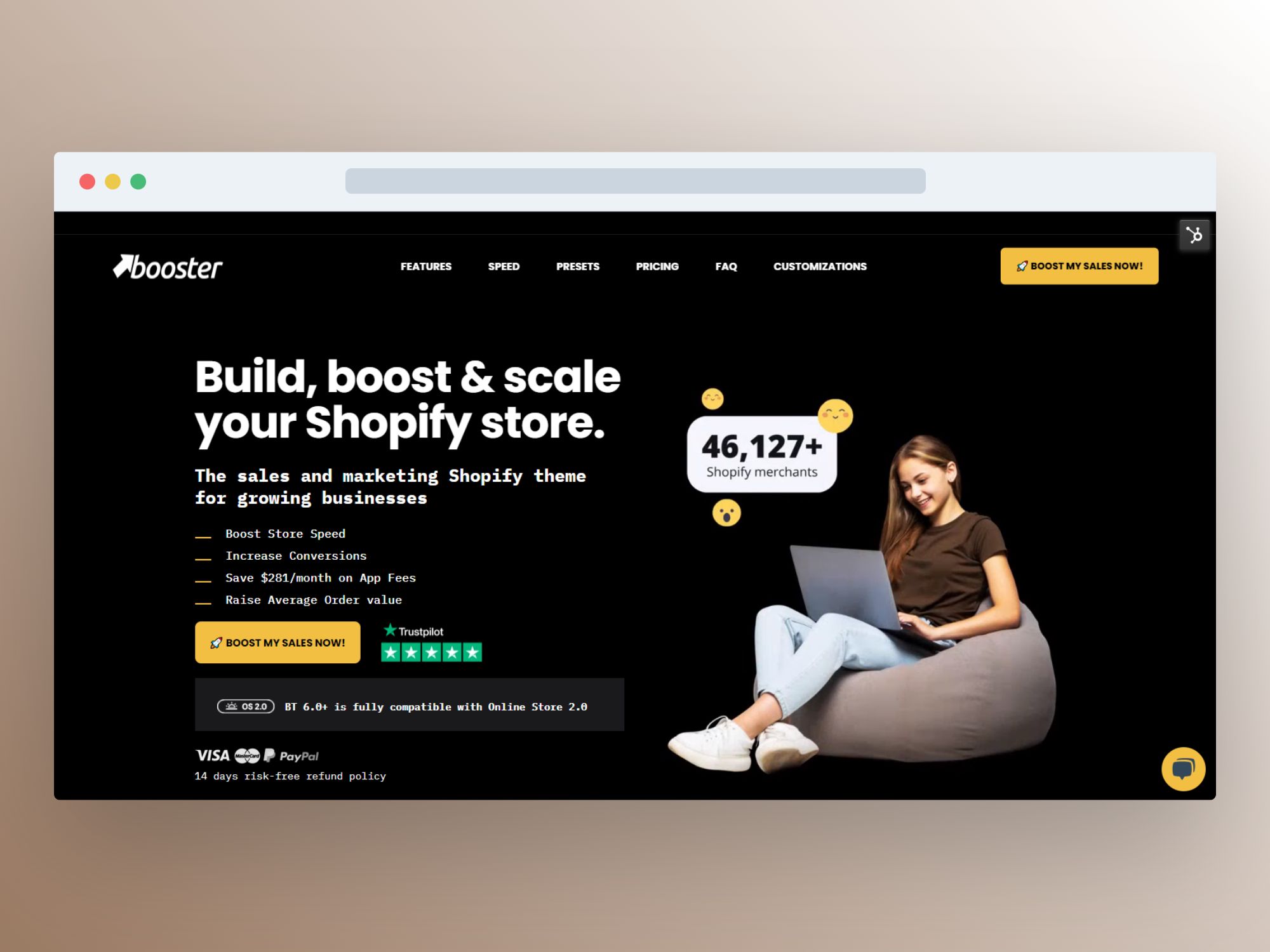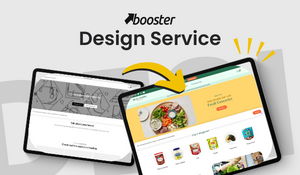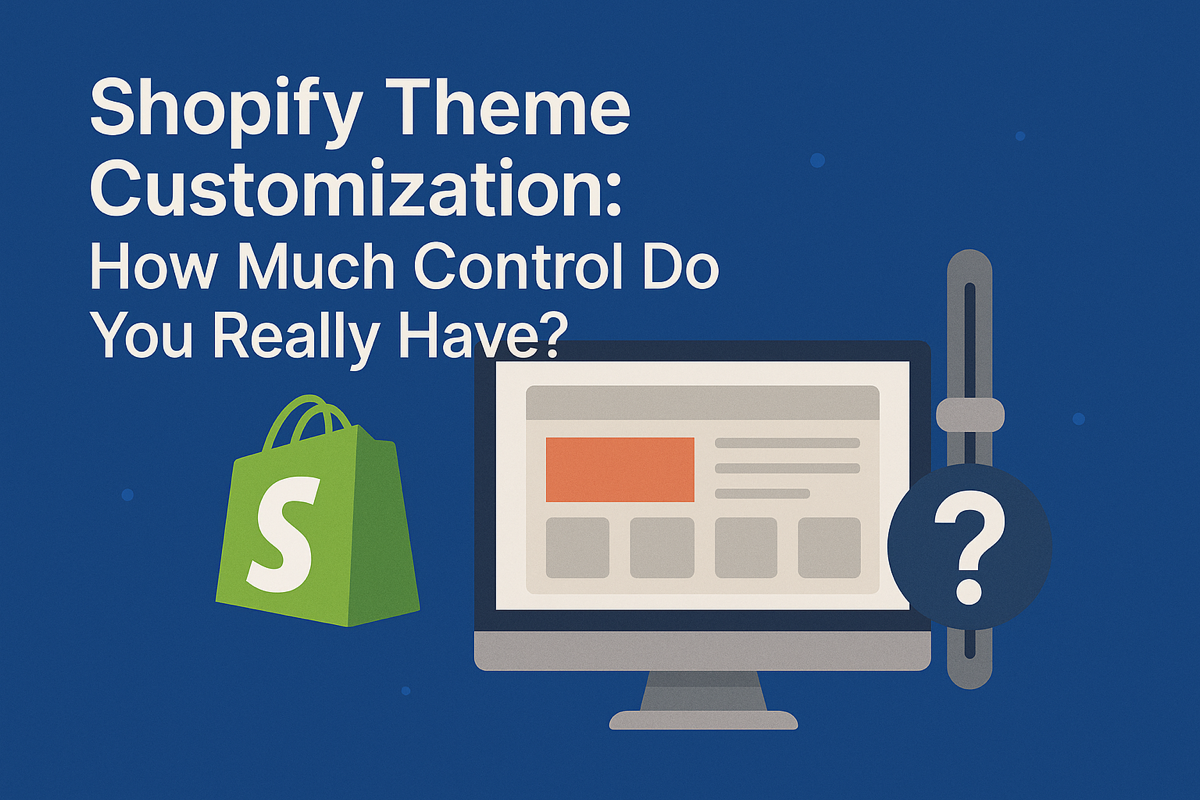Shopify SEO in 2025: How Your Theme Choice Impacts Google
When it comes to running a successful Shopify store, most merchants focus on product selection, pricing strategies, and marketing campaigns. However, there's a critical factor that often gets overlooked—one that can make or break your organic traffic potential: your Shopify theme choice.
In 2025, Google's ranking algorithms have become more sophisticated than ever, prioritizing user experience, page speed, and technical SEO elements. Your theme isn't just about aesthetics anymore; it's a fundamental SEO tool that directly influences how Google crawls, indexes, and ranks your store. If you're serious about dominating search results and driving organic traffic, understanding how your Shopify theme affects SEO rankings is no longer optional—it's essential.
Why Your Shopify Theme is Your Foundation for SEO Success
Think of your Shopify theme as the infrastructure of your online store. Just as a building needs a solid foundation to support everything above it, your store needs a technically sound theme to support all your SEO efforts. You can create the most compelling product descriptions and build thousands of backlinks, but if your theme has poor code quality, slow loading speeds, or lacks proper Shopify structured data markup, you're fighting an uphill battle.
The relationship between Shopify themes and SEO runs deeper than many merchants realize. Your theme controls critical elements like site architecture, mobile responsiveness, page speed optimization, schema markup implementation, and how search engines access your content. A poorly coded theme can create duplicate content issues, generate broken internal links, and produce bloated HTML that slows down your site—all factors that directly harm your Google rankings.
In contrast, the best Shopify theme for SEO 2025 will be built with clean, efficient code that loads lightning-fast, implements proper heading hierarchies, includes comprehensive structured data, and provides mobile-first responsive design. These technical foundations allow Google to easily crawl and understand your content, while simultaneously providing users with an exceptional browsing experience—two factors that Google explicitly rewards with higher rankings.
The Critical Connection Between Page Speed and SEO Rankings
Page speed has evolved from a minor ranking factor to one of the most critical elements of Shopify SEO optimization. Google's Core Web Vitals initiative has made it crystal clear: fast-loading pages rank higher, period. Studies consistently show that even a one-second delay in page load time can result in a 7% reduction in conversions and a significant drop in search rankings.
The harsh reality is that most Shopify themes are bloated with unnecessary code, excessive JavaScript, and poorly optimized images that drag down performance. Many popular themes rely heavily on third-party apps and plugins that inject additional scripts into your site, creating a cascade effect that cripples loading speed. When your theme requires 15-20 apps just to achieve basic functionality, you're essentially building your store on a foundation of technical debt.
Mobile-first Shopify themes have become non-negotiable in 2025, as Google now primarily uses mobile page speed for ranking purposes. If your theme doesn't load instantaneously on mobile devices, you're invisible to the majority of potential customers searching for products like yours. This is where choosing an SEO friendly Shopify theme makes all the difference—you need a theme engineered from the ground up for speed, not one that requires constant optimization workarounds.
Booster Theme eliminates these speed challenges entirely by being one of the quickest, sleekest, and most user-friendly Shopify themes available today. Page loading is practically instantaneous, giving you an immediate competitive advantage in Google's speed-focused ranking algorithm. Instead of losing potential customers during those critical first seconds, you're capturing their attention and keeping them engaged—which sends powerful positive signals to Google about your site's quality.
How Shopify Theme SEO Features Impact Your Organic Visibility
Technical Shopify theme SEO features built into your theme determine how effectively search engines can understand and rank your content. Modern SEO-friendly Shopify themes must include proper HTML5 semantic markup, optimized heading hierarchies, clean URL structures, and comprehensive Shopify structured data markup that helps search engines interpret your product information, reviews, pricing, and availability.
Structured data (also known as schema markup) has become increasingly important for ecommerce SEO success. When implemented correctly, it enables rich snippets in search results—those enhanced listings that display star ratings, price information, stock availability, and other compelling details that dramatically increase click-through rates. However, many Shopify themes either lack structured data entirely or implement it incorrectly, leaving money on the table.
Image optimization capabilities are another critical theme-level SEO feature. Your theme should support next-generation image formats like WebP, implement proper lazy loading, and automatically generate appropriate alt text structures. Without these features built into the theme foundation, every product you add creates another SEO optimization task that most merchants simply don't have time to manage manually.
Breadcrumb navigation, XML sitemap generation, canonical tag management, and proper handling of pagination are additional technical SEO elements that should be native to your theme architecture. When these features are absent or poorly implemented, you face issues like duplicate content penalties, crawl budget waste, and poor internal linking structure—all of which suppress your rankings.
Booster Theme includes expanded rich snippet support and built-in SEO optimization features that eliminate the need for multiple apps and manual configurations. With 40+ conversion-optimized marketing tools included, you save $281/month in app fees while actually improving your site's performance—a win-win that addresses both your bottom line and your SEO potential.
Mobile-First Design: The Non-Negotiable SEO Requirement
Google's mobile-first indexing means the search engine primarily uses the mobile version of your content for ranking purposes. If your theme doesn't provide an exceptional mobile experience, you're essentially asking Google to rank a subpar version of your store. This isn't about responsive design alone—it's about mobile-first architecture that prioritizes the mobile experience from the ground up.
Many older Shopify themes were designed for desktop and then adapted for mobile as an afterthought. These themes often hide content on mobile devices, use tiny buttons that are difficult to tap, implement mobile navigation that confuses users, or create layouts that require excessive scrolling. All of these issues signal to Google that your site provides poor user experience, directly harming your rankings.
The best Shopify theme for SEO 2025 approaches mobile design differently—starting with the mobile experience and ensuring every element is touch-friendly, easily scannable, and lightning-fast. This includes optimized mobile navigation, properly sized CTAs, streamlined checkout processes, and content layouts that work beautifully on small screens without sacrificing functionality.
Mobile page speed deserves special attention because mobile networks are often slower than desktop broadband. Your theme must be extraordinarily efficient with resource loading, minimize render-blocking scripts, and prioritize above-the-fold content. Themes that achieve perfect or near-perfect scores on Google's PageSpeed Insights mobile tests have a measurable ranking advantage over slower competitors.
Theme Customization: Balancing Flexibility with SEO Performance
One of the biggest misconceptions about Shopify themes is that more features automatically equal better results. In reality, feature-bloated themes often sacrifice performance for flexibility, requiring merchants to choose between customization options and site speed—a false choice that shouldn't exist.
Traditional Shopify themes impose significant restrictions on your store's appearance and functionality. When you inevitably need features the theme doesn't provide, you're forced to install apps that inject additional code into your site. Each app typically adds 50-200KB of JavaScript and CSS, along with additional server requests that compound your speed problems. Before long, you're running 20+ apps and wondering why your once-fast store now takes 8-10 seconds to load.
Truly SEO-friendly Shopify themes solve this dilemma by being extremely customizable within the theme itself, eliminating the need for performance-killing apps. When customization options are built natively into the theme architecture, you avoid the code bloat and speed penalties that come with app dependencies. This approach gives you complete control over your store's appearance and experience without sacrificing the technical performance that Google rewards.
Booster Theme removes ALL the restrictions of traditional themes while maintaining exceptional performance. You have complete control over your store's appearance and experience without installing apps that slow down your site. This level of customization freedom, combined with built-in marketing tools and optimization features, means you can create exactly the store experience you envision while maintaining the technical SEO foundation that drives rankings.
The Hidden SEO Costs of App Dependencies
Beyond the obvious monthly fees, Shopify apps carry hidden SEO costs that can devastate your organic performance. Every app you install adds HTTP requests, increases page weight, injects render-blocking resources, and creates potential conflicts with other apps or your theme. These technical issues compound over time, creating a progressively slower site that Google penalizes in rankings.
Consider a typical scenario: A merchant chooses a basic theme and then installs separate apps for reviews, countdown timers, size charts, email capture, shipping bars, product recommendations, Instagram feeds, live chat, and currency conversion. Each app seems necessary, but collectively they've added 2-3 seconds to page load time, created dozens of additional HTTP requests, and introduced JavaScript conflicts that occasionally break site functionality.
The SEO impact is measurable and severe. Google's algorithms explicitly factor Core Web Vitals (Largest Contentful Paint, First Input Delay, and Cumulative Layout Shift) into rankings. Sites that fail these metrics—which app-dependent stores typically do—are pushed down in search results in favor of faster competitors. The merchants suffering most from this are often unaware their theme choice created the problem in the first place.
Smart merchants are recognizing that investing in a premium, feature-complete theme actually costs less than the ongoing monthly fees for multiple apps, while simultaneously providing superior SEO performance. When your theme includes built-in functionality for reviews, marketing tools, customization options, and conversion features, you eliminate the performance penalties that come with app dependencies.
With Booster Theme, you save $281/month in fees by eliminating the need for apps that cause your store to slow down. More importantly, you avoid the hidden SEO costs that come with those apps—maintaining the fast loading speeds and clean code that Google rewards with higher rankings and better visibility.
Structured Data Implementation: Your Rich Snippet Advantage
Structured data markup has become one of the most powerful yet underutilized aspects of Shopify SEO optimization. When implemented correctly through your theme, structured data enables rich snippets that make your search listings stand out with star ratings, pricing information, stock status, and other compelling details that increase click-through rates by 30% or more.
The challenge is that proper Shopify structured data markup requires technical expertise most merchants don't possess. Many themes either lack structured data entirely or implement only basic product schema without the comprehensive markup needed for maximum SEO benefit. This leaves significant opportunities unexploited—opportunities your competitors may be capitalizing on.
Comprehensive structured data should include product schema, organization schema, breadcrumb schema, review schema, FAQ schema, and various other markup types depending on your content. Your theme should automatically generate and update this structured data as you add products and content, ensuring search engines always have accurate, detailed information about your offerings.
Rich snippets aren't just about looking better in search results—they're about relevance and user intent. When someone searches for "blue running shoes size 10," and your listing shows star ratings, price, and stock availability directly in the search results, you've answered their implicit questions before they even click. This relevance signal tells Google your result is highly appropriate for that query, further boosting your rankings over time.
Core Web Vitals: Meeting Google's User Experience Standards
Google's Core Web Vitals have fundamentally changed how we think about Shopify theme affect SEO rankings. These metrics—Largest Contentful Paint (LCP), First Input Delay (FID), and Cumulative Layout Shift (CLS)—measure real user experience and directly influence your search rankings. Themes that help you achieve excellent Core Web Vitals scores enjoy measurable ranking advantages.
Largest Contentful Paint measures how quickly your main content loads. For ecommerce stores, this is typically your hero image or primary product image. A good LCP score is under 2.5 seconds, but many Shopify themes produce LCP times of 4-6 seconds or more due to render-blocking resources and poorly optimized image loading. Your theme's architecture determines whether you'll meet this threshold.
First Input Delay measures how quickly your page responds to user interactions—critical for mobile users trying to navigate your store or add items to cart. Themes bloated with JavaScript often produce poor FID scores because the browser is too busy processing scripts to respond to user inputs. This creates a frustrating experience that Google explicitly penalizes.
Cumulative Layout Shift measures visual stability—whether elements jump around as the page loads. This commonly occurs when images, ads, or embedded content load without proper dimensions specified, causing layout shifts that frustrate users. SEO-friendly Shopify themes prevent CLS issues through proper image dimension specifications, font loading optimization, and careful resource management.
Meeting Core Web Vitals standards isn't just about passing Google's tests—it's about providing genuinely superior user experiences that naturally lead to higher conversions, lower bounce rates, and better engagement metrics. These positive user signals reinforce your rankings, creating a virtuous cycle of SEO success.
Making the Switch: How Theme Migration Impacts Your SEO
If you're currently using a slow, restrictive theme that's holding back your SEO potential, you might worry that switching themes will harm your rankings. While any significant site change carries some risk, a properly executed migration to a faster, more SEO-friendly theme typically results in ranking improvements within weeks as Google recognizes the enhanced user experience and technical optimization.
The key is professional migration that preserves your URL structure, maintains all redirects, ensures proper canonical tag implementation, and verifies that all structured data carries over correctly. Amateur migrations often break internal links, lose customization, create duplicate content issues, or fail to properly redirect old URLs—mistakes that can temporarily tank your rankings.
Professional Shopify theme migration services handle these technical complexities while ensuring your store remains fully functional throughout the transition. The process includes comprehensive testing, staged deployment, and post-migration monitoring to catch and resolve any issues before they impact customers or search rankings.
The performance improvements from migrating to a properly optimized theme often produce immediate SEO benefits. When your page speed jumps from 8 seconds to 2 seconds, Google notices quickly. When your Core Web Vitals scores move from "Poor" to "Good," your rankings respond accordingly. Many merchants report measurable traffic increases within 30-60 days of migrating to performance-optimized themes.
If you're ready to unlock your store's full SEO potential, professional migration to Booster Theme ensures a smooth transition that preserves your existing SEO equity while dramatically improving the technical foundation for future growth.
Ready to migrate to a faster, SEO-optimized theme? Explore our Shopify theme migration services and start ranking higher →
Taking Action: Optimizing Your Shopify Store's SEO Foundation Today
Understanding how your Shopify theme choice impacts Google rankings is the first step—taking action is what separates successful stores from those that struggle with organic visibility. If your current theme is slow, restrictive, or requires numerous apps to achieve basic functionality, you're fighting an uphill battle that only gets steeper as Google's standards continue rising.
The merchants winning at ecommerce SEO in 2025 share a common foundation: fast-loading, technically optimized themes that provide exceptional user experiences without app dependencies. They've recognized that investing in the right theme infrastructure pays dividends through higher organic rankings, better conversion rates, and lower ongoing costs compared to app-dependent alternatives.
Your theme choice determines whether you're building on solid ground or sinking sand. Every day you operate on a suboptimal theme is another day of lost organic traffic, missed conversions, and falling further behind competitors who've made the strategic decision to prioritize technical SEO foundation. The question isn't whether to upgrade your theme—it's whether you can afford not to.
Booster Theme provides the complete package: fastest loading speeds, extreme customization without restrictions, 40+ built-in marketing tools that save you $281/month, expanded rich snippet support, and mobile-first architecture. This isn't just a theme—it's your competitive advantage in an increasingly crowded marketplace where technical SEO excellence separates winners from also-rans.
Ready to transform your Shopify store's SEO performance? Discover how the fastest, highest-converting Shopify theme can elevate your Google rankings and drive the organic traffic your business deserves. Our theme is engineered specifically for merchants who refuse to compromise between customization, performance, and SEO excellence—and who understand that their theme choice is the foundation for long-term ecommerce success.
Experience the power of true SEO optimization. Get started with Booster Theme today →


